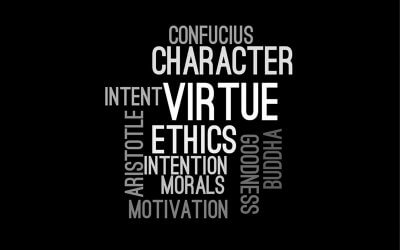Discover how understanding the limitations of averages and embracing probabilistic thinking can improve decision-making and risk management in business.

Selling Micro Caps to Reverse into Public Shell Companies – Snake Oil?
I recently saw an article saying, “Reverse Mergers are more Popular than Ever.” The author was extolling the virtues of such transactions for MicroCap Stocks. However, this solution I rarely find delivers as promised, in many cases, is more of a poison chalice.
How it works
A private entity reverses into a public shell company to go public. The shareholders in the private corporation exchange their shares for the public company’s shares. The number of shares issued to the private company gives its shareholders control over a majority of the stock of the shell, and so they are running the public company.
The legal structure for this type of merger is called a “reverse triangular merger.” The process of a reverse triangular merger is:
- The public shell company creates a subsidiary entity.
- The newly formed subsidiary merges into the private company that is buying the shell.
- The newly formed subsidiary has now disappeared, so the private company becomes a subsidiary of the shell company.
Using a reverse triangular merger avoids the shareholder approval process usually required for acquisitions. The deal requires shareholder approval – the shareholders of the private company and shareholder of the new subsidiary entity. However, the only shareholder of the new subsidiary is its parent company.
The process is beneficial because there is no change in control of the private company, and the private company continues to operate as a going concern; thus, preventing any potential damage to the business from loss of contracts if either of those events were to occur.
However, a reverse merger still requires the filing of a Form 8-K with the SEC, which requires much of same the information found in an initial public offering prospectus.
The Case for Reversing into a Public Shell
The of advantages with a reverse merger are:
-
Speed. A reverse merger takes just a few months.
-
Time commitment. A reverse merger requires far less effort than an initial public offering, allowing the management team to continue to focus on the business.
-
Timing. As this is a discussion about Micro Caps, raising cash is not a likely scenario, so that a reverse merger can take place regardless of stock market conditions.
-
Tradable currency. As a public company, it is easier for a corporation to use its stock for acquisitions. Also, the value of its stock is theoretically more certain and realizes a higher multiple, increasing the company’s value.
-
Liquidity. Sometimes the existing shareholders of a private company favor the reverse merger path to have an exit for selling their shares. Especially in cases where the shareholders are unable to sell their shares to the company or other shareholders, and the majority of shareholders don’t want to sell the company.
-
Stock options. As a public company, stock options are more valuable to recipients and so can be used to incentivize management and employees. If the option holders elect to exercise their options, they can then sell the shares to the general public rather than having the company have to buy them.
The Problems of Reversing into a Public Shell
The disadvantages are:
-
Cash. Since we are discussing Micro Caps, an IPO is not a possibility. Thus, the company will not be able to raise money through the reverse.
-
Cost and Loss of Value. While the reverse merger typically is cheaper than an IPO, there is still considerable ongoing expenditure to meet the requirements of being public. An active business can expect to at least $500,000 a year on auditors, attorneys, SOX compliance, filing fees, investor relations, etc. which are required by being public. Also, assuming the company is trading on an 8x multiple and has a tax rate of 35%, this will reduce the value of the company by $1.8MM
-
Prior life. Following the Great Recession, there is currently a glut of failed dot-com shells on the US and Canadian Shell markets. Unless the Buyer is very familiar with the Principals and previous business involved, bear in mind the words from Lost in Space – “Danger, Will Robinson!” Without spending a small fortune and investing vast amounts of time, it is almost impossible to find all their contracts and obligations, as well as the legal actions, launched them. As such, there will always be questions about what you are buying. Also, many of these companies have a terrible will with existing stockholders, and a bad reputation is hard to shake.
-
Liabilities. Not all shell companies are actual shells. In additional to unresolved litigation and disgruntled shareholders, as mentioned above, many have undisclosed financial obligations and regulatory history that will not go away after the reverse merger. Sellers of shell companies often are economical with the truth, the problems, or potential problems with the company. On completion of the transaction, the sellers have little incentive to solve these issues, leaving litigation as the only remedy, and an imperfect solution it is. Acquiring only a shell that has been inactive for several years can ameliorate this risk.
-
Stock price. When a company does a reverse merger, many of the existing shareholders seek to exit. However, all these selling shareholders put downward pressure on the stock price since there are now more sellers than buyers. A falling stock price reduces the effectiveness of stock options issued to employees and increases the dilution of the existing shareholders if they plan to use the stock for acquisitions.
-
Thinly traded. Usually, there is only a minimal amount of trading volume in the stock of a public shell company. Immediately following the reverse merger, only the shares held by the original shell shareholders are tradable, as no other shares are registered with the SEC yet. Building trading volume takes time, an active public relations and investor relations campaign, as well as the registration of additional stock. Besides, if the market capitalization of the company is below a certain threshold, no analysts will follow it, and most mutual funds cannot buy it. The lack of analyst coverage and fund demand will reduce interest in the company further.
Finally, thinly trade shares are volatile, and the price will tend to move a great deal on any sizable order. However, any untoward movement in the stock price could lead to class action litigation, and the costs of fighting these lawsuits can be substantial.
As can be seen, there are significant issues with public shell companies that should keep companies from buying them. In particular:
-
The annual cost of being a public company – which should prevent any micro-cap from considering this path, and
-
Being a thinly-traded stock – this offsets the main reason for being a public tradable stock.
© 2015 Marc Borrelli All Rights Reserved
Recent Posts
The “Flaw of Averages” Causes Havoc for Businesses
What is Your Strategy, In a Sentence?
If you are banking on the vaccine returning us all to “normal” quite quickly, in the famous words of Dr. Akande, “Hope is not a strategy.” Your organization should be preparing a well-defined strategy for 2021 and beyond. Once you have this strategy, the ultimate question: can you clearly articulate it in one sentence? Distilling your strategy into a single sentence is a powerful tool, both for your legacy and your team effectiveness. Not sure where to start? I offer a plug-in formula to set up your strategy sentence.
Character Matters
“It’s easier to hold to your principles 100% of the time than it is to hold to them 98% of the time.” — Clayton Christiansen. I have often written about the importance of a company’s Core Values. That’s because no matter what words you may have chosen as values, your organization’s Core Values are on display in how leadership and employees actually behave. As I’ve said before, how you have acted in the last twelve months will define your career for the next decade. Your character, and your company’s character, matters.
New Year’s Resolutions, Once More Unto the Breach
The holidays have been even quieter than normal, which has given me plenty of time to reflect on my New Year’s resolutions. Looking at 2021, I decided to use a completely new approach to lay out my goals. The result of my new approach? A highly-detailed, accountable, actually achievable plan for the next year (I think). Wondering what this process looks like?
To Vaccinate or Not to Vaccinate, that is the Question
What do your employees, peers, and leadership team think of the COVID-19 vaccine? Will you require the vaccine, or will you let employees make individual decisions? As a leader, you need to steer the discussion about vaccines in your organization with your Core Values in mind. No matter what strategy your organization takes, the most important factor is going to be how you communicate your decision.
3 Ways You Could be Undermining Your Core Values
Can you answer “Why does your organization exist? What are your core values?” Great. Now, would your latest entry-level employee give a similar answer? How about someone who has been at your company for a year? Your core values give your organization a guiding mission. Many organizations pay this idea lip service, but their true commitment to their core values was tested this year. As we close out 2020, there’s no better time to examine how your organization is approaching your core values.
Are You Prepared for 2021 With Enough Cash?
Companies don’t go bankrupt because they lose money; rather, they run out of cash. Where are we, heading into 2021? First, you can expect your cash to get tighter as we weather the current economic slowdown. Then, with a vaccine on the horizon, you will need to be positioned for growth. If you don’t have the cash you need, have you looked at how you can generate the cash internally? More on how to improve your cash conversion cycle…
Tony Hsieh, a Corporate Culture Icon, RIP
In his work as Zappos CEO and elsewhere, Tony Hsieh believed, and proved, that culture is the most important thing in an organization. According to Hsieh, if you get the culture right, the rest will take of itself. How did Zappos do it? You can take a look at everything from the company’s interview questions, to “The Offer” to leave a position as a new hire. Hsieh believed that a company’s brand is just a reflection of the culture, and his legacy is felt across so many industries.
CEO, Try Thy Hiring System
How does your company hire? I’ve seen the good, the bad, and the surprisingly ugly hiring processes in my career. From the HR email mix-ups to the interviewer watching the World Series while I responded to his questions, I’ve learned that you can tell a lot about an organization simply by examining the hiring experience. Are you chasing away the kind of people you need at your company?
What is Leadership?
What is it, exactly, that great leaders do? There are plenty of overused adages about “leadership” in business. It’s worth examining the tropes around leadership, plus the traits of the leaders who actually leave a mark. Great leaders are forged through adversity, and they leave a legacy. What does that look like in your organization?










